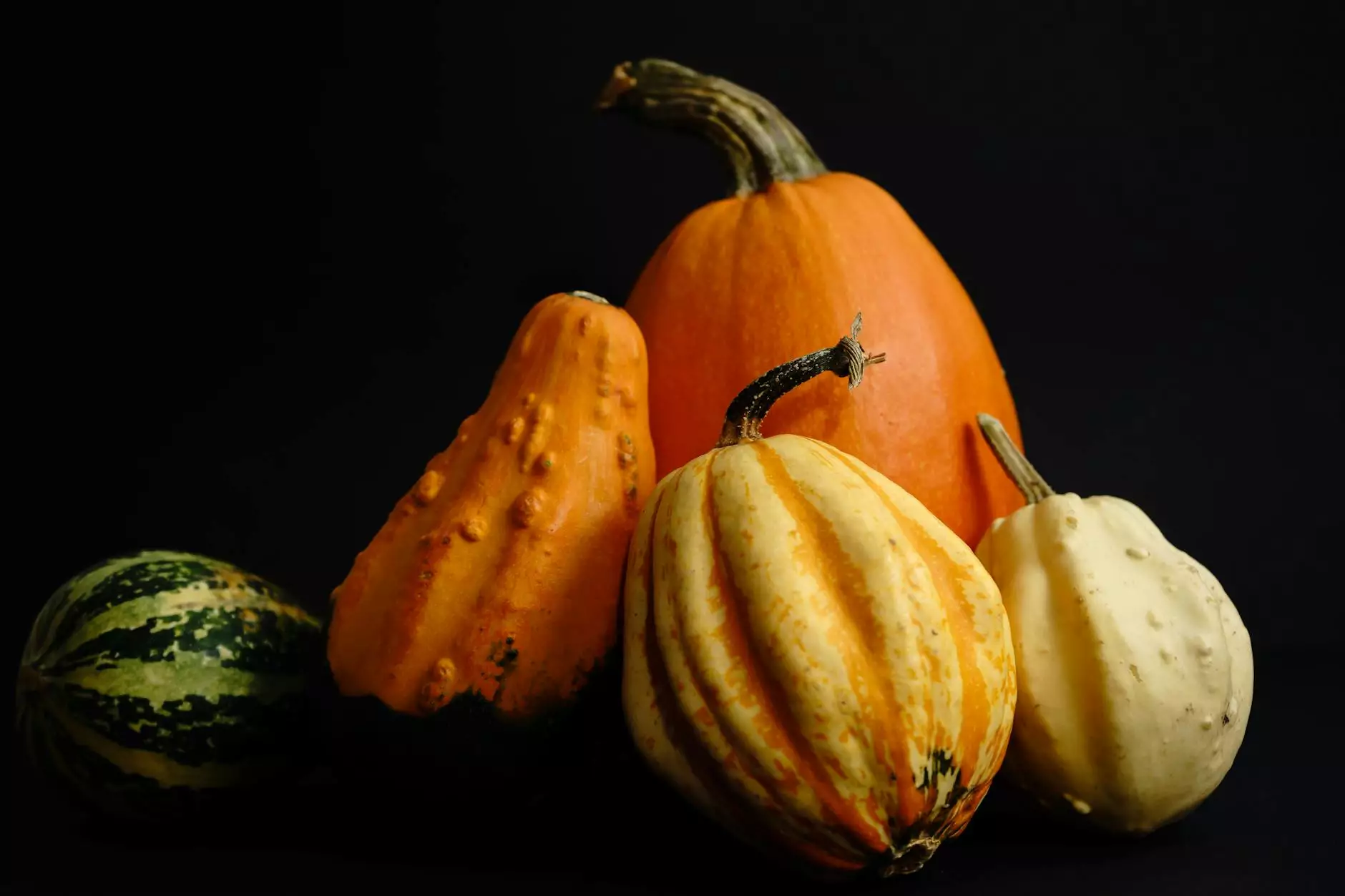The Ultimate Guide to Pumpkins in the UK: Growing, Caring, and Business Opportunities

Pumpkins have become more than just a decorative symbol for Halloween; they are a versatile fruit that plays a significant role in the culinary arts, gardening, and local businesses across the UK. With the growing trend towards sustainable living, demand for locally sourced produce has skyrocketed, making pumpkin cultivation an attractive opportunity for aspiring gardeners and entrepreneurs alike. In this comprehensive guide, we will explore everything you need to know about pumpkins in the UK, highlighting how to grow them, care for them, and tap into the lucrative market they present.
Understanding Pumpkins: What Makes Them Special?
Pumpkins (Cucurbita pepo) are part of the gourd family and are known for their vibrant orange color, although they can also come in a range of hues including white, green, and yellow. They are typically harvested in autumn and can be used for a variety of purposes:
- Culinary Uses: From soups to pies, pumpkins offer a rich flavor and numerous health benefits.
- Decorative Uses: Pumpkins are popular for Halloween decorations, particularly in the form of jack-o'-lanterns.
- Educational Activities: Schools often engage students in pumpkin-related activities, making them a popular choice for educational programs.
- Profit Potential: Growing pumpkins can be a profitable venture for small-scale farmers and gardeners.
Growing Pumpkins in the UK: The Basics
When it comes to growing pumpkins in the UK, there are several factors to consider to ensure a fruitful harvest. Here are the essential steps to follow:
1. Selecting the Right Variety
There are numerous pumpkin varieties, each with unique characteristics. Some popular varieties in the UK include:
- Halloween Pumpkins: Ideal for carving, these are typically larger and have a sturdy texture.
- Eating Pumpkins: Varieties like ‘Sugar Pie’ are sweet and perfect for cooking.
- Ornamental Pumpkins: These small and colorful pumpkins are mainly grown for decorative purposes.
2. Preparing the Soil
Pumpkins thrive in well-drained, nutrient-rich soil. Before planting, ensure that your garden soil is amended with organic matter such as compost or well-rotted manure. Test the pH of the soil; ideally, it should be between 6.0 and 7.5 for optimal growth.
3. Timing Your Planting
The best time to plant pumpkins in the UK is in late spring to early summer, once the risk of frost has passed. Generally, planting occurs between late May and early June. This timeframe allows the pumpkins to mature by autumn, coinciding with peak harvest time.
4. Planting Techniques
Pumpkins can be direct-seeded or started indoors for transplanting. For direct seeding:
- Create hills in rows and plant 2-3 seeds per hill, about 1 inch deep.
- Space hills about 4-6 feet apart to allow for sprawling vines.
5. Watering and Fertilization
Pumpkins require plenty of water, especially during flowering and fruit development. Aim for consistent moisture but avoid waterlogging the soil. Additionally, a balanced fertilizer can be applied every few weeks to enhance growth.
Care and Maintenance: Ensuring a Successful Pumpkin Harvest
Beyond the initial stages of growing pumpkins in the UK, ongoing care is crucial. Here are essential maintenance tips:
1. Pest and Disease Management
Pumpkin plants can suffer from pests such as aphids and squash bugs, or diseases like powdery mildew. Implementing integrated pest management techniques, such as:
- Regular Monitoring: Keep an eye on your plants for any signs of distress.
- Natural Predators: Introduce beneficial insects like ladybugs to control pest populations.
- Fungal Treatments: Use organic fungicides to treat powdery mildew when identified early.
2. Pruning and Training
To optimize your pumpkin yield, consider pruning unnecessary vines and training the plants to grow in specific directions. This helps improve light exposure and air circulation, reducing the risk of fungal issues.
3. Harvesting Your Pumpkins
Pumpkins are typically ready for harvest when the skin is hard and the stem begins to dry out. Use sharp gardening shears to cut the fruit from the vine, leaving a few inches of stem attached to prolong storage life.
Exploring Business Opportunities with Pumpkins in the UK
The pumpkin industry in the UK has witnessed substantial growth, providing numerous business opportunities for enthusiastic gardeners. Here's how you can capitalize on this trend:
1. Selling Pumpkins Locally
Consider setting up a local stand to sell your harvested pumpkins directly to consumers. Being part of the local farm-to-table movement can increase your visibility and sales.
2. Participating in Farmers’ Markets
Engaging in farmers' markets is an excellent way to reach a broader audience. Customers are often eager to support local businesses and appreciate the freshness of homegrown pumpkins.
3. Pumpkin-Related Events
Organizing seasonal events, such as pumpkin picking experiences, can attract families and create memorable experiences. This idea not only promotes the sale of pumpkins but also fosters community engagement.
4. Developing Pumpkin Products
You can explore the production of pumpkin-related products such as:
- Pumpkin Pies: A beloved treat perfect for autumn.
- Pumpkin Seeds: Sold roasted or raw as a healthy snack.
- Decorative Items: Create and sell pumpkin-themed decorations for the holiday season.
5. Social Media Marketing
Utilizing social media platforms to promote your pumpkin business is essential. Share your growing process, recipes, and success stories to engage with potential customers actively. Creating visually appealing content featuring your pumpkins can drive interest and sales.
The Environmental Impact of Pumpkin Farming
Pumpkin farming can have a positive impact on the environment when done sustainably. Consider the following practices:
- Crop Rotation: Practice crop rotation to maintain soil health and reduce pests.
- Organic Practices: Grow pumpkins without synthetic fertilizers or pesticides to minimize environmental impact.
- Utilizing Kitchen Scraps: Compost your pumpkin scraps after harvest to enrich your garden soil.
Conclusion: Embracing Pumpkins in the UK
With their diverse uses and growing popularity, pumpkins present a unique opportunity for gardeners and businesses alike in the UK. Whether you are looking to grow your own pumpkins or delve into the commercial side of this industry, the time is ripe. By following the steps outlined in this guide and implementing sustainable practices, you can successfully cultivate pumpkins while contributing positively to your local community and the environment. So get your hands dirty and start your pumpkin journey today!
pumpkin uk








